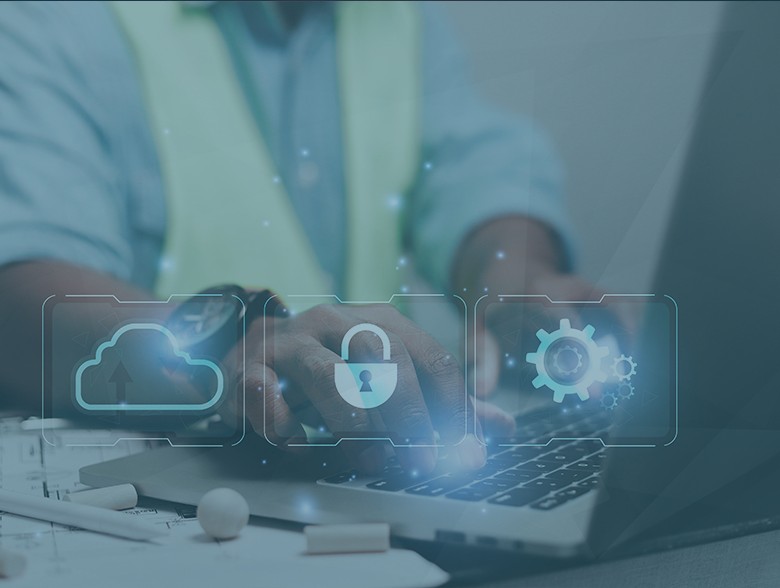Containerization has revolutionized the world of software development.
By Divakar Kolhe, Digital Marketer, Market Research Future (Part of Wantstats Research and Media Private Limited)
In today’s fast-paced digital landscape, containerization has emerged as a game-changer for software development and deployment. Containers offer a lightweight and scalable solution, enabling organizations to rapidly deliver applications across different environments. However, as containers gain popularity, ensuring robust container security becomes imperative. This blog post will delve into the world of container security, highlighting its significance, the risks involved, and effective strategies to fortify your containerized infrastructure.
Containerization has revolutionized the world of software development and deployment, enabling organizations to achieve scalability, flexibility, and efficiency. However, with this innovation comes the pressing need for robust container security practices. As containers become more prevalent in the cloud computing landscape, ensuring their security becomes paramount. So, in this article, we will delve into the key aspects of container security, exploring the risks and challenges involved and presenting best practices to mitigate vulnerabilities.
Understanding Container Security
Containers provide isolated and lightweight environments for running applications, but they can introduce security risks if not properly managed. One primary concern is the potential for a compromised container to spread malware or gain unauthorized access to sensitive data. Moreover, container orchestration systems, like Kubernetes, introduce additional complexities, making it crucial to adopt a multi-layered security approach.
Basically, container security refers to the practice of implementing measures to protect containerized applications and the underlying infrastructure from potential threats. Containers provide isolation for applications, but if not adequately secured, they can become vulnerable entry points for cyberattacks. By exploiting weaknesses in container configurations or utilizing compromised container images, malicious actors can gain unauthorized access, compromise data, or execute malicious code.
Let us understand one of the aspects here, which is how to integrate the security testing and automate the deployment of the container security model. Such systems must be deployed carefully and according to established SOPs, which is a chaotic task. Once the construction is complete, it is necessary to manage them in accordance with industry standards, such as those published by the National Institute of Standards and Technology (NIST) and the Center for Internet Security (CIS).
Understanding how to automate policies to indicate builds with security flaws, especially as new vulnerabilities are discovered, which is the trick in this situation. Vulnerability scanning is still crucial, but it is only one of many security measures used to safeguard your container settings.
Security testing should incorporate strategies that prompt automated rebuilds because patching containers is never as effective of a fix as rebuilding them. The initial element of this process is using component analysis tools that can track and flag problems. The establishment of tooling for automated, policy-based deployment is the second step.
The following inquiries must be answered when integrating security testing and automated deployment:
- Do any containers have known flaws that need to be corrected before they can be used in a real-world setting?
- Are the deployments set up properly? Exist any containers with excessive privilege that don’t require the increased privilege? Do we have a root file system that is read-only?
- What is the CIS Benchmarks compliance posture?
- Are any workloads deemed sensitive being isolated using default features like network policies and namespaces?
- Are we making use of SELinux, AppArmor, and seccomp profiles, among other built-in security and hardening tools?
Key Challenges and Risks
- Vulnerabilities in Container Images: Containers rely on pre-built images, often sourced from public repositories, which may contain unpatched software or misconfigurations. This increases the risk of exploitation by attackers.
- Container Breakouts: Weak isolation between containers or improper privilege management can allow attackers to break out of one container and gain unauthorized access to the underlying host or other containers.
- Container Sprawl: Unmonitored and uncontrolled container proliferation can result in a large attack surface, making it challenging to detect and manage potential security breaches.
- Inadequate Network Segmentation: Insecure network configurations can lead to unauthorized lateral movement between containers or allow attackers to eavesdrop on container communications.
Best Practices for Container Security
- Secure Container Images: Regularly update and patch container images, ensuring they are sourced from trusted repositories. Scan images for vulnerabilities and enforce image signing and integrity verification.
- Implement Role-Based Access Controls (RBAC): Apply granular RBAC policies to restrict container access and prevent unauthorized modifications to containers or their configurations.
- Container Runtime Security: Utilize container runtime security tools to monitor and control container behaviour, detect anomalies, and prevent container breakouts.
- Network Segmentation and Policies: Implement network segmentation to isolate containers and define strict network policies to control traffic flow between containers and external systems. Use secure network protocols and encryption to protect container communications.
- Continuous Monitoring and Logging: Deploy robust monitoring and logging solutions to detect and respond to security incidents promptly. Monitor container activity, collect and analyze logs for security events, and enable automated alerts.
- Regular Vulnerability Scanning and Patch Management: Conduct periodic vulnerability scans on container images and apply patches promptly to address any identified vulnerabilities.
- Secure Container Orchestration: Harden the container orchestration system by implementing strong authentication mechanisms, securing control plane components, and regularly updating the orchestration software.
Why is the Container Security market fostering?
According to Market Research Future’s latest research report on Container Security Market, the growing popularity of microservices and digital transformation has led to impeccable growth in the market.
Container security could have been the most prolific market segment if there were a huge number of applications running in the containers used in businesses.
In order to modernize outdated IT infrastructures, several governing authorities across the globe have opted to virtualize their data and the massive workloads in containers as a service module. These containers are pivotal in accelerating such a transition from the conventional to the modern path of cloud security.
With the several benefits the container security offers including prompt responses, increased revenue, swift business decision-making ability, etc., several businesses around the globe have started embracing this technological advancement to automate their business and have customer-centric services that aid in their customer acquisition and retention.
With this, the continuous interaction between the applications running in the container and the deployment of several applications across the open-source software development platform enhances the platform’s portability, improves traceability, and utilizes and reallocates the container with a minimal data loss in any case of emergency or any casualties. All these reasons are pivotal in the overall growth of the container security market, which is eventually helping this technology reach every fraction of the global industry.
Conclusion
Container security is a critical aspect of maintaining a secure and resilient cloud computing environment. By understanding the risks and implementing the best practices outlined above, organizations can enhance their container security posture. Regular vulnerability scanning, strong access controls, and continuous monitoring are essential to mitigating risks associated with containers. As the use of containers continues to grow, a proactive and comprehensive approach to container security will be fundamental to safeguarding the future of cloud computing.
Reference – Market Research Future
About the Author
 Divakar Kolhe is a highly skilled and experienced digital marketer who has dedicated his career to driving online success for businesses. With a strong passion for data-driven strategies and a deep understanding of consumer behavior, Divakar has become an invaluable asset in the field of digital marketing.
Divakar Kolhe is a highly skilled and experienced digital marketer who has dedicated his career to driving online success for businesses. With a strong passion for data-driven strategies and a deep understanding of consumer behavior, Divakar has become an invaluable asset in the field of digital marketing.
Divakar Kolhe – [email protected]
Website: https://www.marketresearchfuture.com


